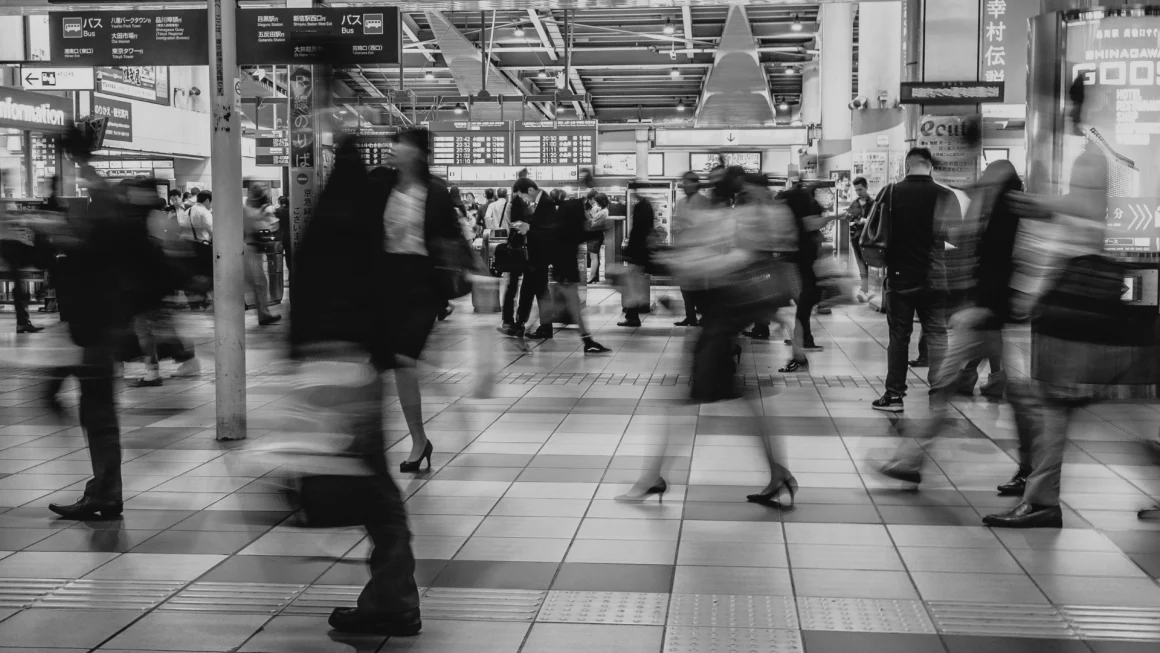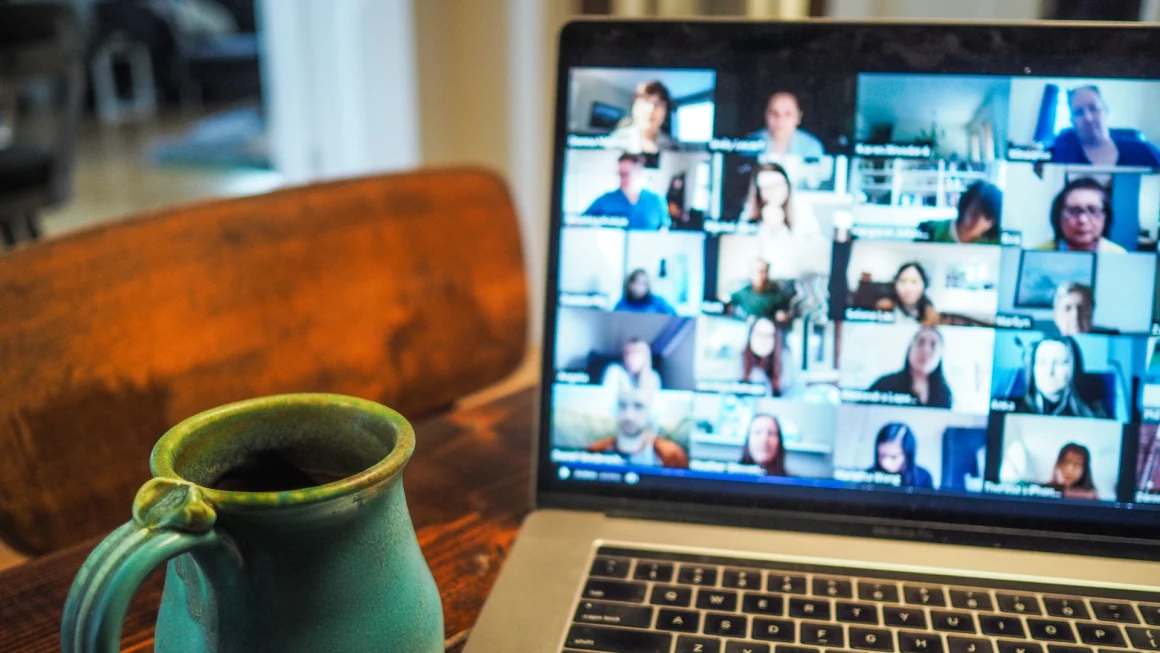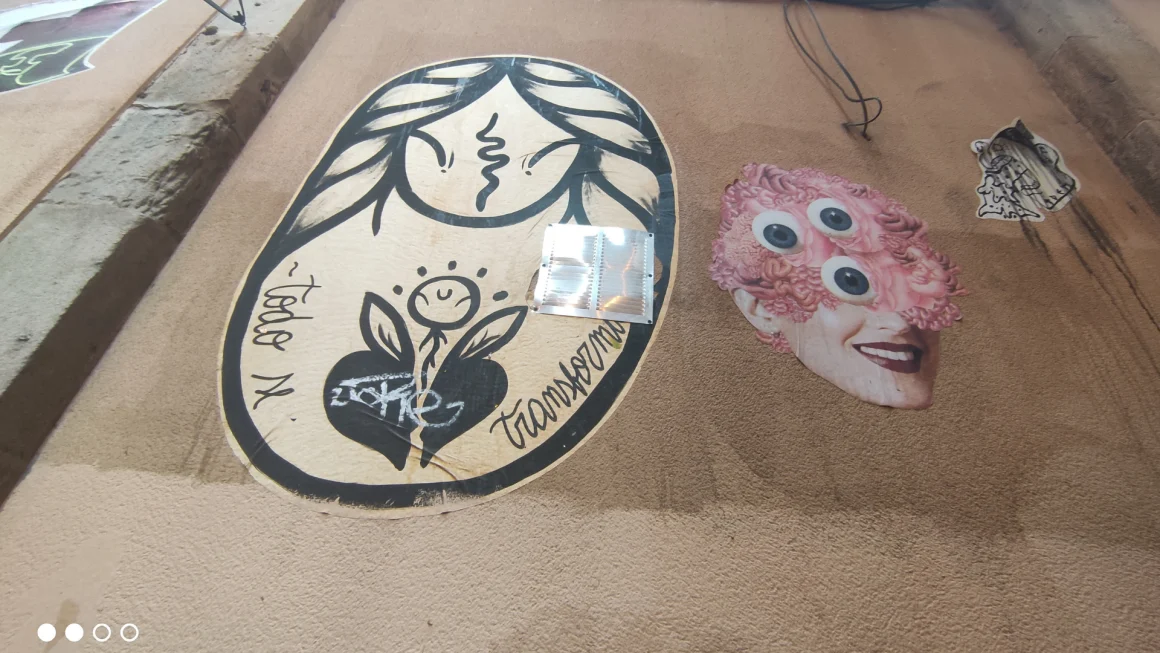This blog is a follow up on my last two blogs called ‘On how art and creativity can help us to stay positive and connected during the corona pandemic’ and ‘On how the corona pandemic influences the use of textile’.
As we saw in the art and textile sector, a lot is changed due to the corona pandemic. In the art sector, we saw people getting creative and feeling connected due to the process of making art which led to a positive outlook on the world for those people. In the textile sector, we saw designers looking for a way to create an anti-bacterial fabric, a fabric that tells a story about today’s world and a concept on how textiles can help us to create distance from each other in a connecting way.
The corona pandemic also influences the interior in many different ways. To arrange these changes, I choose to divide them into two clusters. ‘The Practical’ and ‘The Visual’.
The Practical
Were interior was heading to a ‘fashion over function’ mentality in the last couple of years, it now goes back to the interior being functional and practical. One of the biggest changes in this ‘pandemic world’ is the use of anti-bacterial soaps and the use of facemask. These changes are also finding their way in the interior.
For example, the ‘Sterilising Lamp’ by Beijing-based designer Frank Chou, which combines an ultraviolet light (UV) with a tray. Chou says “I designed a sterilizing lamp which functions as a tray and lamp that emits UV light. When people return home, they can place keys, phones, and wallets on the tray to sterilize. The user would press the cover body to activate the internal UV light source, the body then lowers to cover the items in the tray with the UV light. After 60 seconds the cover automatically rises to reveal the now-sterilized items again.
Frank Chou says he found inspiration when home became the space for work and life interchangeably. “Life is the best source of design,” he says. Chou aimed to create an “unconscious design” when creating the lamp, which he hopes can blend into the home and become part of people’s daily routine, as opposed to a disinfection method that they consciously have to think about doing.
This UV lamp is a stylish concept for sanitizing everyday items. Chou aims that design is not only about the look or shape of something; its core meaning is to solve a problem, and that is exactly what we see happening with design in the time of the pandemic.

Italian lighting brand Artemide also created a special sterilizing UV lamp called ‘Integralis’. Where Chou’s lamp is specially designed for the home and is not harmful to people, the Integralis is designed for offices and used at times when no people are around. This lamp can turn into room sanitizers that emit antiviral ultraviolet lights. It can be fitted to light fixtures and programmed via an app to emit normal light when rooms are occupied and ultraviolet (UV) rays when they are empty. While invisible UV light can kill pathogens including viruses, it can be harmful to humans. However, the blue spectrum of visible light can also have an anti-microbial effect. Artemide CEO Carlotta de Bevilacqua says: ‘In the absence of people, higher energy levels and frequencies such as UV rays can be used, which also act on viruses.’ Unlike cleaning products such as alcohol-based sanitizers, ‘Light can act constantly to prevent the development of bacterial colonies,’ she said.
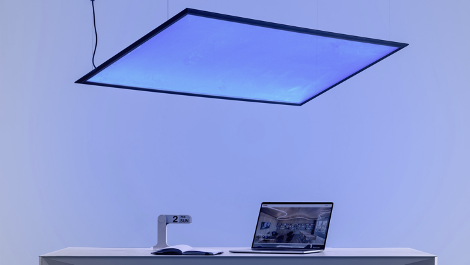
As I said before, one of the biggest changes in this ‘pandemic world’ is the use of anti-bacterial soaps and the use of facemask. The lamps respond to the use of anti-bacterial products, but what about the facemasks?
In the retail sector, the company ‘RioCan’ designed an interactive installation that uses 352 disposable face masks to create a wall, offering those without masks one to put on before entering the shopping mall. ‘We all need to do our part to keep each other safe. This poster is made up of packages containing a disposable mask. Please take one and help protect yourself and others. Take care.’
Once all the masks are pulled off the wall, the more individualistic “Take Care” message is revealed to actually be a more community-minded “Take Care Of Each Other.” The wall of masks will be replenished as more are needed. “Masks aren’t just mandatory so (guests) can get into the shopping center, wearing a mask is an important function in keeping our community safe and taking care of each other,” says Terri Andrianopoulos, VP of marketing and communications at RioCan REIT. “We wanted to not just tell people to wear a mask, we wanted to make it easier for them to wear a mask and make an otherwise very stressful moment a little more fun.”
Creating a sense of connection and care is important to RioCan, Andrianopoulos notes because the brand wants to reinforce that its shopping centers as being “community hubs,” where people see their neighbors and get the essentials and other products they need.
The Visual
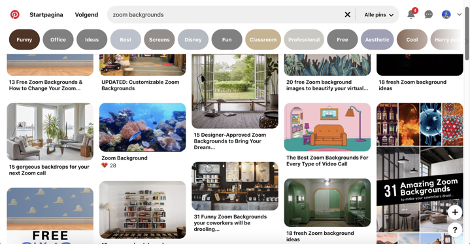
Next to the practical interior changes, we can also see a change in the visual aspect of the interior. One of the biggest changes for many people is working from home and have meetings through platforms like Zoom. We can so, see our colleague home and interior. But not everyone likes that, due to a messy/busy household that doesn’t look professional or due to privacy reasons. Virtual backgrounds also keep the focus on the speaker by concealing any background activity. A virtual background can be used to set the tone for a professional interaction rear compliments your style. That’s why the digital background is becoming more and more popular and Pinterest is exploding from new ‘Amazing Zoom Backgrounds’. It is super interesting to me that only a couple of months ago so many people didn’t even know what Zoom was and right now the search term ‘Zoom backgrounds’ or ‘Digital backgrounds’ is a common term to search.
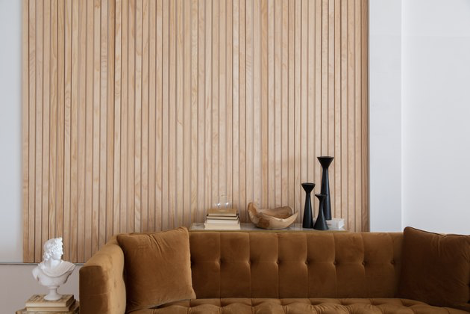
Another example of the pandemic changed the visual aspect of interiors is our outlook on our own interior. Because we are staying at home more than ever before we are looking at our home in a different way. “Now more than ever we are finding the true meaning of our homes: a place where we want to feel comforted, safe, and inspired,” says Lauren Nelson, a San Francisco-area interior designer. “There is so much unknown right now that we cannot control, but our homes are a space where we do have control over what we put in it, how we arrange it, and how it makes us feel.”
Artist Cyril Lancelin responds to this finding the true meaning of our home as a place to feel comfortable and safe in his conceptual design named ‘Pillow Pyramid’. Lancelin imagined a protective fort made of pillows to encourage people to stay home to stop the spread of coronavirus. ‘Pillow Pyramid’ sees a double bed sheltered under a tent-like tower of cushions.
To make the series of images, the artist chose cushions to symbolize the idea of the house as a cozy nest, a place of rest, and above all of the security. Through this pandemic that we are all experiencing, staying at home is the most important tool at our disposal. In these difficult times, we need reassuring images, often from an early age, children build mini huts and dens with cushions, pillows, and blankets. The pyramid of pillows is a tribute to these constructions. With this project, Lancelin also hopes to encourage other creatives to stay at home and share ideas through their work. Even if the world of culture and exhibitions are currently on pause, our social ties can still be united through the sharing of art and design.
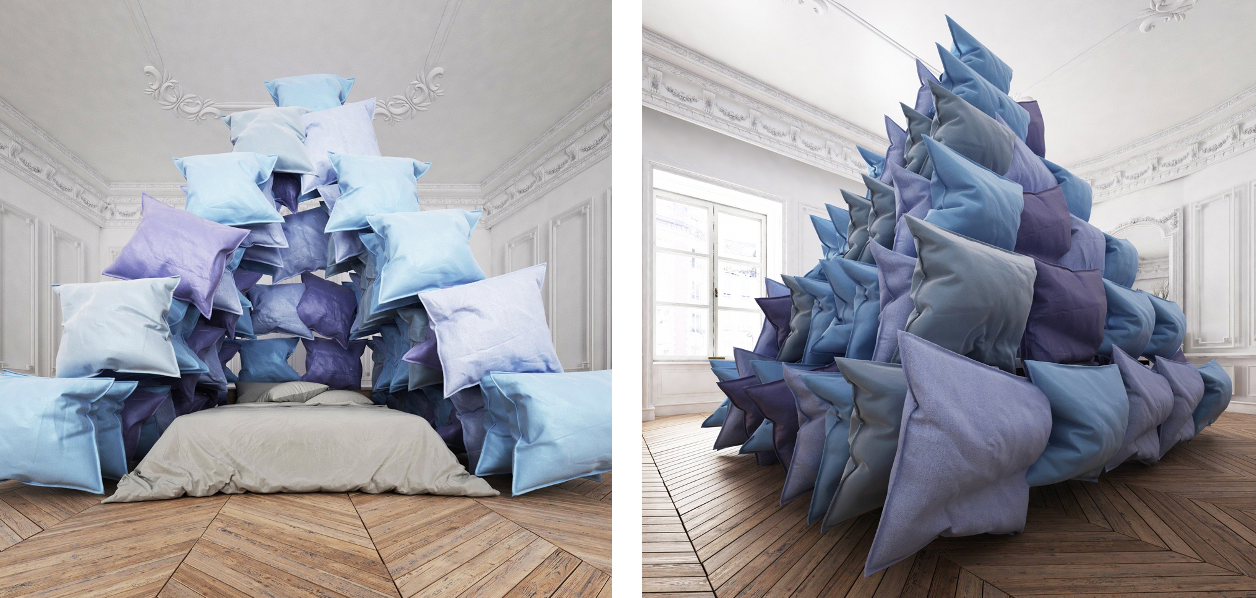
In conclusion, we can say that the corona pandemic influences the interior in many different ways, especially looking at ‘The Practical’ and ‘The Visual’. It is amazing to see how designers getting inspired by today’s world and finding innovative ways to shine a positive and inspiring light on this period in time. I am personally very excited to see what the future will bring us as we look at interiors.

